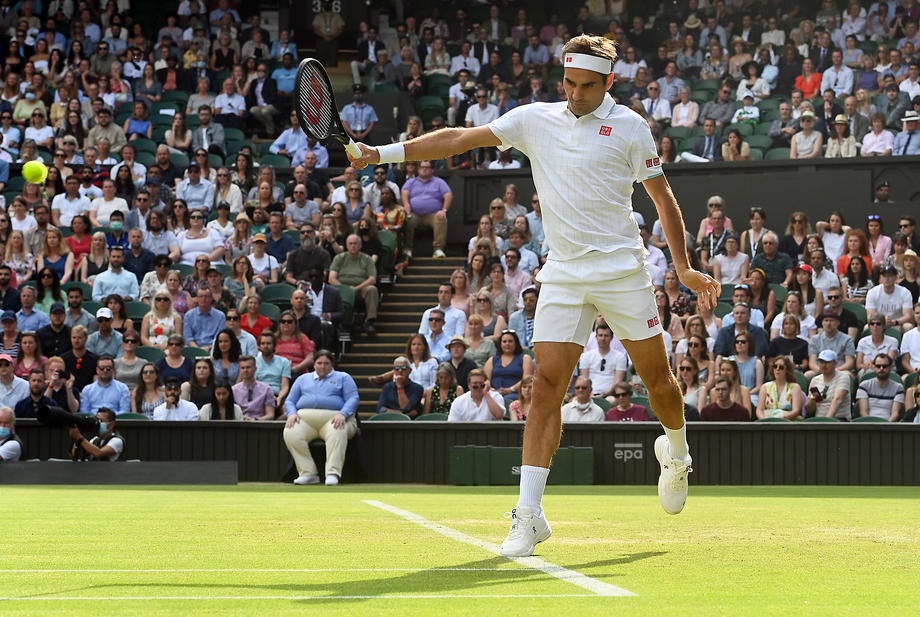- Australian Open Draws and Order Of Play for Thursday, January 23, 2025
- Ricky’s pick for the Australian Open quarterfinal between Sinner and De Minaur
- Australian Open Draws and Order Of Play for Wednesday, January 22, 2025
- Goran Ivanisevic Is No Longer Coaching Elena Rybakina
- Ricky’s pick for the Australian Open quarterfinal between Alcaraz and Djokovic
- Australian Open Draws and Order Of Play for Tuesday, January 21, 2025
- Tennis Report From Australian Open: Novak Making A Run by Alix Ramsay
- Australian Open Draws and Order Of Play for Monday, January 20, 2025
- Five-set frenzy continues in third round of Australian Open
- Australian Open Draws and Order Of Play for Sunday, January 19, 2025
- Pam Shriver’s Car Containing Grand Slam Trophies Stolen in California
- FREE GIFT WITH PURCHASE Of Incrediwear Supports
- Australian Open Tennis 2025 by Alix Ramsay
- Ricky’s picks for Day 6 of the Australian Open, including Djokovic vs. Machac
- Australian Open Draws and Order Of Play for Friday, January 17, 2025
Roger Federer’s • 2017 Turns Into A Magic Carpet Ride • Whats Next?
- Updated: October 15, 2017
By Francisco Resendiz
Beneath the closed roof of Shanghai, Roger Federer opened a new chapter in his rivalry with world No. 1 Rafael Nadal.
Federer’s 6-4, 6-3, victory over Nadal in the Shanghai Rolex Masters final ended one streak and extended another while reinforcing his forward path.
The second-ranked Swiss’ masterful 72-minute triumph snapped Nadal’s 16-match winning streak.
It was Federer’s fifth consecutive victory over his archrival—the first time he’s beaten Nadal in five straight matches—as he narrowed the Spaniard’s lead in their iconic rivalry to 23-15.
“I don’t know what my expectations were going in,” Federer said. “I thought I might struggle early on because it was a late finish last night. I had no nerves before the match, surprisingly. I think I was pretty clear about how I wanted to play the match. I started off very well and relaxed from then on.”
It was Nadal’s first loss since he fell to Nick Kyrgios in Cincinnati in August and its effects may linger as the US Open champion had his right knee taped during the match and appeared to be limping afterward.
The combination of the faster hard court, pristine conditions beneath the closed roof and the lower skidding bounce benefitted Federer from the start. The 19-time Grand Slam champion broke in the opening game, played attacking points with purpose and never permitted the 10-time Roland Garros to get comfortable or extend rallies.
“Have been a very difficult match for me,” Nadal said. “He played very fast and he played well.
“Of course was not the best match for me of the week. When somebody plays better than you, sport is not very difficult. That’s the real thing, no? When you play against somebody that is better than you in most of the things that really matters in this sport, in this kind of surface, then it’s tougher.”
The 94th championship of Federer’s career is more than another Masters championship—it reinforces the 36-year-old Swiss is on the right path moving forward.
A core theory explaining Rafa’s past dominance of Roger is that the left-hander’s heavy, hellacious topspin forehand to the right-hander’s one-handed backhand left Federer facing an indefensible assault.
It’s true that Nadal’s record against opponents with one-handed backhands—including Federer—is tremendous. It’s also true that the homogenization of surfaces creating benefitted Nadal’s grinding baseline game more than Federer’s all-court acumen.
While you can point to the injury-induced absences of Novak Djokovic, Andy Murray and Stan Wawrinka as contributing sparks to reigniting the Roger-Rafa rivalry, there are more compelling reasons why Nadal and Federer have caught fire again this season.
Both pulled the plug on their 2016 seasons to recover and rehab from injuries and both have looked revitalized in 2017. The Australian Open’s decision to speed up the surface played to Federer’s attacking instincts.
The brilliant five-game run he delivered rallying from 1-3 down in the fifth set to dispatch Nadal in the Australian Open final not only signaled a shift in the balance of power in this rivalry it showed path forward for Federer.
The eight-time Wimbledon champion’s decision to skip the clay court season ensured Federer will be at full strength for the indoor fall season where he’s played some of his most dynamic tennis.
Skipping the dirt season, Federer also maintained his high level of confidence throughout the season instead of having to rebuild after potential clay-court setbacks.
It also proves Federer can cede Paris to Nadal and still challenge for the world No. 1 ranking by remaining committed to his attacking cause.






